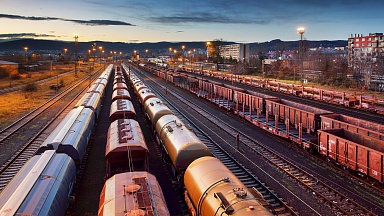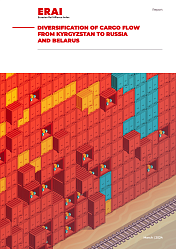There are two main reasons that have driven the success of the exportation of goods from China to Europe and the rest of Asia, which therefore allowed trains to be filled with cargo. First, is the transformation of the great city of Yiwu, which has become a world-reference as an e-commerce platform and a logistics hub. Second, is the evolution of the products that China is offering to the market, which are goods with more add-value that are able to absorb a higher impact of logistics. The railway solution has become a solid alternative for these new products with more add-value that are in need of a responsive supply chain rather than an efficient one. A supply chain that is client and time-efficiency oriented and doesn’t only focus on reducing cost at any price is necessary.
However, an enterprise is not based only in exporting. Neither is the Belt and Road Initiative, the umbrella under which we operate. Our aim is to be global. A true bridge between China and the world, and vice versa. Not only focusing on the export side of the equation, but also on imports. And here is where the perfect storm begins.
Cargo has been transported on a regular basis from Europe to China, but not in the frequency and volume that we desired.
The main reasons behind it have been three. First, the type of products offered by Spain, for instance, are to be suitable to be used on the railway. Products such fruits, vegetables, para pharmaceutical products, and pork have not yet reached a sufficient demand in China. Second, the Russian ban on European products by not allowing them to be transported through their territory made logistics impossible. And finally a reliable solution for reefer containers that allows the products to arrive in optimal conditions was not developed properly.
However, now the situation has changed. China’s internal demand is booming. Thus the typologies of products that Spain is able to supply are now trendy and ready by reaching the needed value and equilibrium between supply and demand necessary to be sold in China. Also, Russian authorities announced their intention to change the current situation regarding the sanctions of European products. In addition, the technology to make the trip under perfect conditions is tried and tested.
It is publicly known that railway transportation is the more environmentally friendly solution by having much less impact and a smaller carbon footprint than planes, ships or trucks.
This is thanks to the new conditions of the market where we have the right products, conditions and means. In addition, society and consumers are demanding corporations to be sustainable and consequent. We are now on the right path to success.
In our fifth anniversary, it is important to make a balance. Despite the fact that we have been able to transform difficulties and challenges as small milestones achieved, we cannot be satisfied yet.
We are now in a privileged position to help the world to change and make an important impact in supply chain management. I am confident that if we keep receiving support from the Chinese and Spanish authorities, we will achieve the goal of creating a unique bridge between China and Europe.
Thanks!
We will contact you.



